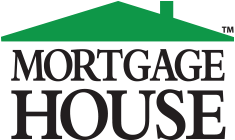A brief insight into the world of commercial property investment
A brief insight into the world of commercial property investment
Property Professor Peter Koulizos is a university lecturer and author of The Property Professor’s Top Australian Suburbs.
He gives us an overview to investing in commercial property.
Much has been written about residential property investment but the area of non-residential property (commercial property) is relatively unknown to the average property investor. Most investors feel comfortable investing in residential property as they are familiar with it – whether it is a house or an apartment.
Many people have also had to rent a property at some stage so have some knowledge of residential property investment, albeit from the tenant’s perspective.
Commercial property, on the other hand, is not as well known. Those who do not deal with the day-to-day matters of running a business from a commercial building would probably be unfamiliar with the terms and conditions of commercial leases, GST implications and who is responsible for the outgoings (expenses) of the building.
The purpose of this article is to provide readers with a brief insight into the world of commercial (non-residential) property investment. Commercial property comes in three main forms: office, retail and industrial. Investing in commercial property is quite different to residential property.
Return Residential property investment is relatively low risk and, as a consequence, has a low return. Commercial property has a higher return but comes at a higher risk. For example, a house or apartment will average a yield of 5%, whereas commercial property, such as an office, may average an 8% yield. Care needs to be taken when calculating the yield for commercial property.
Property being sold with a high yield may look attractive but will often come with a catch, such as a short lease term or a rental income above the prevailing market which will drop when the lease expires.
Risk The higher risk comes in the form of higher vacancy rates.
Let’s use the office example. It could take a while to find a new tenant for an office – many months and possibly more than a year. Conversely, finding a new tenant for a residential property generally takes a week or two.
Duration of leases Residential leases tend to be for six or 12 months. However, commercial property leases are generally for a much longer period of time. It is not uncommon to have leases that are for an initial five year period with the option to renew for another five years.
Quality of tenant The tenant is obviously a crucial part of a property investment. In commercial property, a government or large corporate tenant is considered a ‘blue chip’ tenant. They are likely to rent a property for a long period of time and are unlikely to default on the rent.
On the other hand, many commercial properties are let to small and medium sized businesses which are not considered to be of the same quality as a blue chip tenant. These properties generally rent for a higher yield to reflect the higher risk.
Economic performance
As in any form of property investment the economy is vital to financial health. Consumer and business confidence typically changes with the economy. When confidence is extremely low, there are many businesses that have to close. If a building has one of these businesses as a sole tenant, there could be some very hard times for the commercial investor. Residential property is fairly resilient, however, when it comes to the economy.
During a low economy the worst that may happen is that it could take an extra few weeks to find a tenant or the rent may have to be dropped by $5 or $10 per week.
High cost of entry
Buying commercial property is often much more expensive than buying residential property. CBD office or retail space is generally the most expensive space given its locality. Industrial property on the outskirts of the city can also be expensive due to the size of the property being purchased. Costs, however, can be minimised by purchasing smaller strata title premises.
Maintenance costs
Upgrading a residential property is relatively cheap. A paint job, new floor coverings, kitchen and bathroom can cost as little as $20,000 to $30,000. Refurbishing a commercial building, however, can be a very costly exercise. New airconditioning, upgrading the building to meet new health and safety standards and refits can cost tens and sometimes hundreds of thousands of dollars. The owner is, in 99% of cases, responsible for capital upgrades because tenants pay their own shop or office fit out and any specific requirements, eg security systems.
Outgoings
One of the advantages of being an owner of commercial property is that the tenant usually pays most of the outgoings such as council rates, insurance, repairs and maintenance. This means that most of the rent collected by the owner is able to be kept, unlike the situation with residential property where the owner uses the rent money to pay rates, taxes, maintenance and repairs.
All details of who pays the outgoings, how much rent is owed and how often it is increased are outlined in the lease.
The lease
This is the most important document in relation to commercial property. Unlike a residential lease which is commonly a standard document of about four pages, commercial leases are often 50 to 60 pages in length, are not standard documents and generally need a solicitor to draw them up. Read the lease carefully. If you are unsure of anything, ask a legal professional to explain it to you. Commercial property is not usually a first property investment. Most investors begin with a residential portfolio, then move to commercial property when they feel they are ready to expand and diversify their investments or purchase premises as a business owner for their business. As always, there are many considerations for every investment and each strategy needs to be fully explored and investigated before making any decisions.
